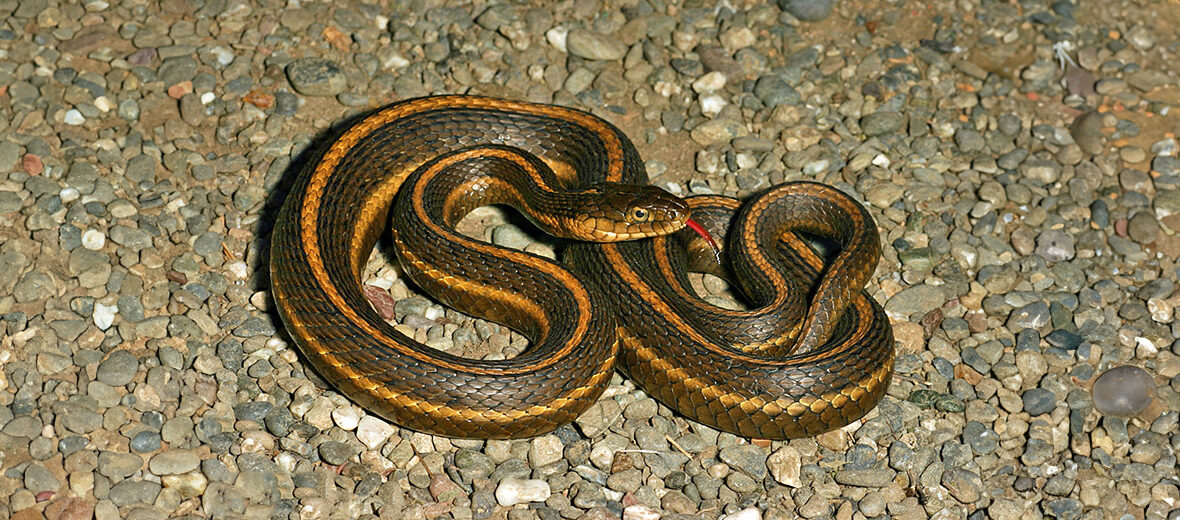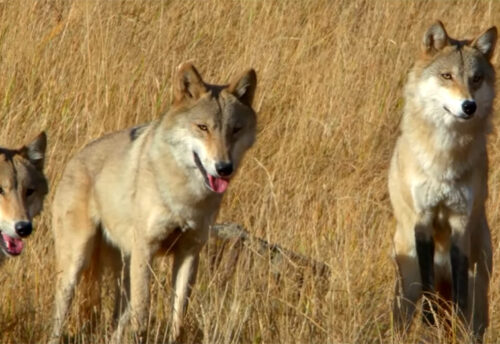
The giant garter snake is considered the largest species of garter snake known. They are also very rare to come across. They hail from the wetlands of central California, in the United States. Sadly, these snakes are threatened by habitat destruction at the hands of residential and commercial developments, farming, ranching, and ecosystem modifications; habitat division at the hands of roads and railroads, which can also result in vehicle strike (being hit be vehicles); hunting; trapping; invasive species, that can result in predation and disease; and pollution. The IUCN lists these snakes as Vulnerable. Their populations are also decreasing.
First the Stats…
Scientific name: Thamnophis gigas
Weight: Up to 3+ lbs.
Length: Up to 65 inches
Lifespan: Presumed to be up to 10+ years
Now on to the Facts!
1.) These snakes are venomous, but only mildly so.
2.) Their venom is a neurotoxic compound that aids in slowing down prey items.
3.) As a result of being semiaquatic, they are rarely found more than a few feet from a body of water.
4.) Due to their dependency on water, their distribution has been limited.
5.) They are partial to tule marshes. However, the destruction of these habitats has driven them to dwell in artificial wetlands, like rice fields.
But wait, there’s more on the giant garter snake!
6.) Utilizing water to thermoregulate (regulate their body’s temperature), they depend on stagnant or slow moving bodies of water that contain emergent vegetation, as fast moving water tends to be too cold for their liking.
7.) Despite the snake’s reliance on water, they often spend most of their time on land and also brumate (hibernation for reptiles) on land as well.
Did you know…?
A bite from 1 of these snakes is likely to cause a red and itchy rash around the bite area and perhaps mild localized pain.
8.) These snakes are also semi-fossorial (spend time underground) and when not underground, they hide among leaf litter.
9.) As a result of many giant garter snakes living among rice fields, they are also living on private property, which causes a degree of difficulty in studying them in the wild.
10.) They are diurnal (active during the day).
But wait, there’s still more on the giant garter snake!
11.) American bullfrogs, California kingsnakes, and various raptors all prey on these snakes.
12.) Fish, frogs, and tadpoles are all on the menu. In a case of irony, juvenile American Bullfrogs are also on the menu, while juvenile garter snakes are on the bullfrog’s menu.
Did you know…?
These snakes have been discovered having increased levels of heavy metals like mercury in their bloodstream as a result of preying on mercury laden fish. It is not yet certain if the high mercury levels have an affect on the garter snakes.
13.) Since giant garter snakes are more spread out, it takes more of an effort for males to find a female.
14.) These snakes are ovoviviparous (eggs develop in the female’s body and live snakes are later born).
15.) Females birth up to 17 live young each year. However, that amount is directly effected by the availability of food. For example, less food = fewer snakelets being born.
Now a Short Giant Garter Snake Video!
Be sure to share & comment below! Also, check out the Critter Science YouTube channel. Videos added regularly!
Want to suggest a critter for me to write about? Let me know here.
Some source material acquired from: Wikipedia & IUCN
Photo credit: Gary Nafis – California Herps




